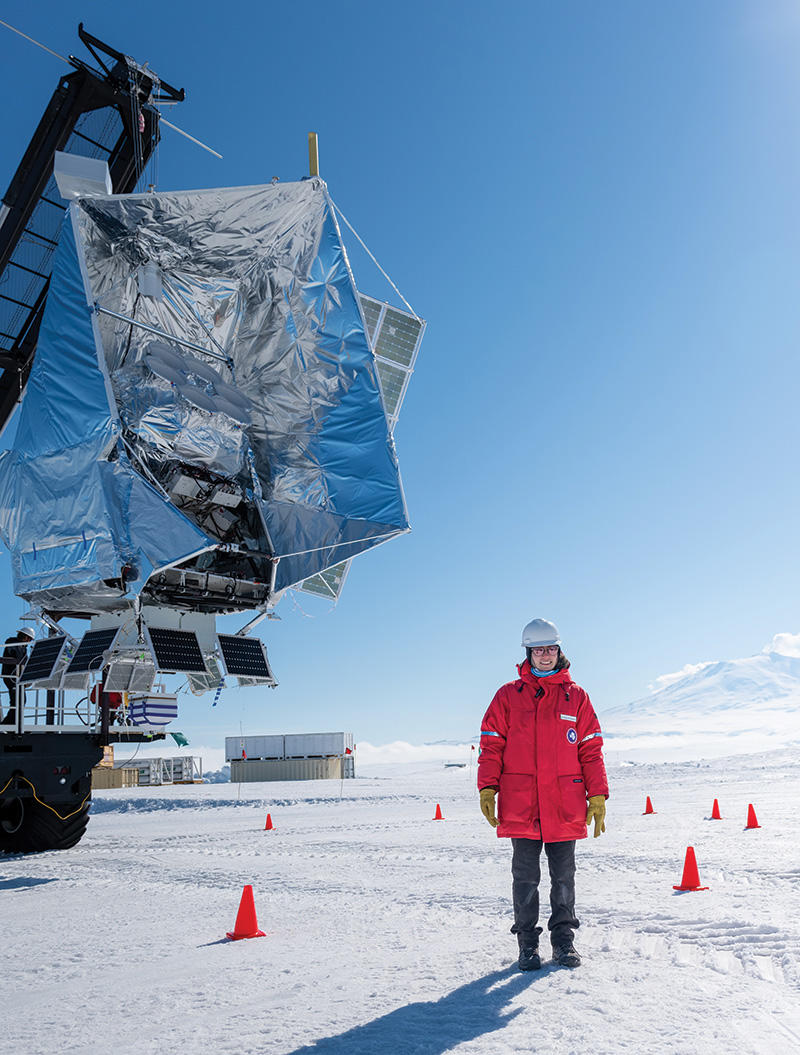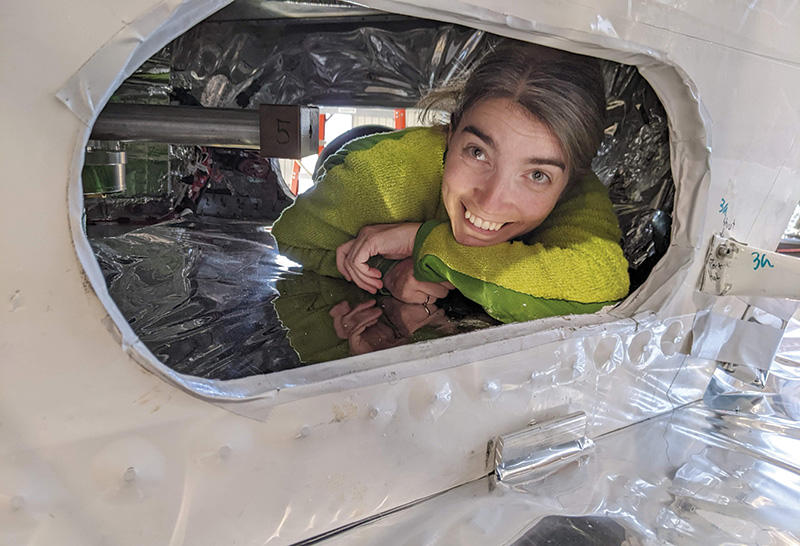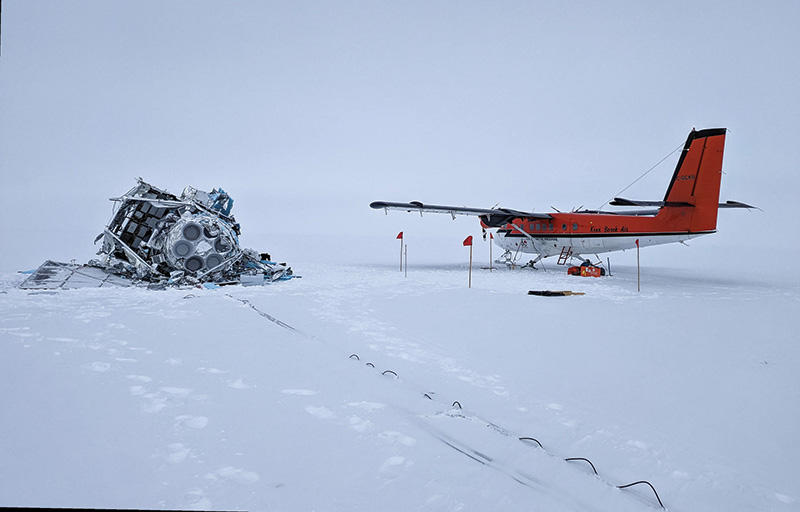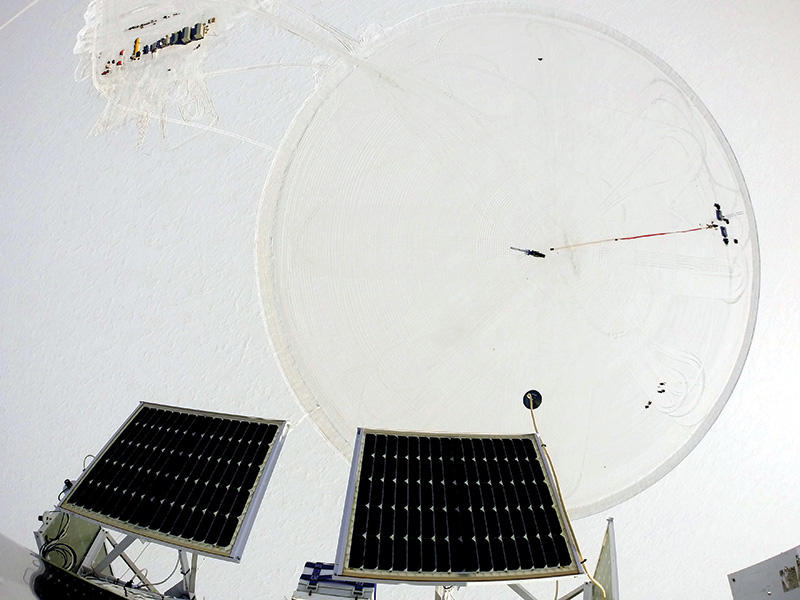Grad Student Uses Balloons with Telescopes to Study the Cosmos
Even though dark matter can’t be imaged directly, Redmond explains, it distorts the light from galaxies behind it
Susan Redmond looks to the skies as part of her studies as a fifth-year graduate student in mechanical and aerospace engineering. Redmond is part of a team studying cosmic microwave background radiation, a key to understanding the evolution of the universe. Her projects include balloons that lift more than 20 miles into the stratosphere and hold an array of telescopes to study the origin of the universe.
Redmond, working with a group of Princeton grad students led by physics professor Bill Jones ’98, spent the winter months helping to launch a solar-powered balloon the size of a hockey arena into the skies above Antarctica — a perfect place in the summer because the endless daylight offers “basically unlimited power,” and the weather is better. She’s now in New Zealand working on another balloon-based space telescope — one that will have a field of view 40 times larger than that of the Hubble Space Telescope.
Balloons offer a number of advantages for cosmic research, Redmond says. They get above 95% to 98% of the atmosphere. They avoid issues that ground telescopes have, such as atmospheric turbulence, which blurs images. They have access to a wider range than land telescopes. And they are significantly cheaper than any space telescope — the cost of a balloon telescope is around $3 million to $10 million for the entire life cycle including development, build, flight, and analysis.
“Our entire development costs for one of these instruments [are] less than the yearly operating costs for the Hubble Space Telescope,” Redmond says.
The Hubble, not including costs to develop and launch, runs about $90 million a year to keep running and acquiring data.
Balloons are a useful platform to prepare people and technologies for future missions on space telescopes. The time frames are shorter — the missions are 10 years instead of 30 years for space telescopes — and the protocols are less strict. Plus, the telescopes can be recovered and reused for other missions.
To make the missions fly, the team fills a house-sized balloon about a third full of helium on the ground and then releases it. As it goes up, the balloon expands as the air pressure around it decreases. As it floats, it expands to the size of a football stadium. The six telescopes inside Spider-II, the project in Antarctica, are 30 feet tall and 7,000 pounds.
Redmond works the thermal systems. The scariest time is during the ascent: The balloon has to pass through the troposphere, where it’s far colder than anything they designed for, Redmond says. “So we just hope that we go through it fast enough. So I’m excited for 30 seconds, and then I anxiously watch.”
At a time when weather balloons have been in the news after a Chinese balloon was shot down by the U.S. military, Redmond doesn’t see any danger to the balloon telescopes she works on. “You can’t really shoot our balloons down — they’re too high,” she says. There was a case of a runaway balloon that fighter jets tried to shoot down in 1998, but it didn’t work. “You can put a hole in it, and they’ll come down a week later, but it’s not the best thing. Our telescopes are pointed upright towards the sky, which makes people less anxious.”
The telescopes’ aim is to study the broad-scale origin of the universe. The balloon in Antarctica is measuring the cosmic microwave background, looking at the polarization of the earliest light in the universe. In New Zealand, the telescope is mapping out dark matter. Even though dark matter can’t be imaged directly, Redmond explains, it distorts the light from galaxies behind it — giving clues to the location and amount of dark matter.
Another part of Redmond’s studies focuses on using flexible mirrors to help image exoplanets directly from Earth, which takes up to 20 hours of continuous study.
“Balloons are pretty great,” Redmond says. “It’s a really fun realm to be in and you get to be much more hands-on than you do on a space telescope.”














No responses yet